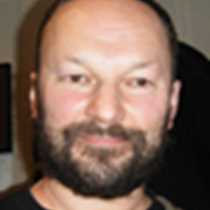Wellington, North Island
The Oceanic Discoverer arrived in Wellington this morning after a rough night sailing down the Wairarapa coast, past the south east of New Zealand’s North Island. The boisterous weather was wilder than predicted by the local weather service, but the Lindblad Expedition members and the ship’s crew held up well. We did, however, end up starting our day in Wellington a little later than originally planned.
Wellington, ‘the world’s coolest little capital,’ is the political capital of New Zealand and a major cultural centre. With a population of around 200,000 people it is New Zealand’s third largest city. The artistic world thrives in Wellington, a city particularly known as the major site of New Zealand’s film industry. Here Peter Jackson (now Sir Peter), Fran Walsh and the special effects wizards at Weta Workshop worked on Lord of the Rings and the Hobbit.
The Linblad expeditioneers began their day with a trip to one of Wellington’s most beautiful historic buildings, old St Paul’s cathedral. The cathedral was built in 1866, constructed entirely of New Zealand native timbers. At St Paul’s a local guide explained how the church had been saved as a historic building in the 1960s, after the Anglican (episcopalian) church had moved to a new modern cathedral. He also outlined the church’s historic connections with the armed forces of the USA. In 1942, American marines, soldiers and sailors arrived in Wellington in their thousands. New Zealand’s own servicemen were away deployed in North Africa and Europe, fighting since 1939 by the side of Britain, the Mother Country. After Pearl Harbor, American forces were sent to New Zealand, both to defend the country and as a base for heading into the South Pacific to roll back the invaders. The Americans were extremely popular with much of the New Zealand population, especially the young women (perhaps less so with some of the young Kiwi men). St Pauls became the favoured place of worship for the Americans and the Marine colors still hang in the cathedral.
After our visit to old St Paul’s we drove up to Wellington’s magnificent botanic gardens. From here a fine view of the city and its harbor was enjoyed. The gardens contain a wonderful mix of exotic and native plants and are a good site to observe local bird life. The tui, a beautiful native song bird, was particularly in evidence during our visit. Our party was particularly taken with the garden’s peace monument, a beautiful Japanese-style waterfall and pond. This monument symbolizes the hope that the atomic bombings at Hiroshima and Nagasaki in 1945 will never be repeated.
From the gardens we descended to the waterfront for a visit to New Zealand’s national museum, Te Papa Tongarewa, (the house of treasures). This world class museum had exhibits on a wide range of aspects of New Zealand’s natural history, Maori culture, the culture of the Pacific, the history of her immigrant peoples, and the arts and crafts of the country.
The afternoon was rounded off with a visit to Zealandia, a sanctuary or ‘mainland island’ established in the suburb of Karori, in the old city reservoir. A predator proof fence has been erected around the sanctuary and pest species eliminated from the area. New Zealand was once a land where the only native land mammals were several bat species and birds and reptiles ruled supreme. Many bird and reptile species were eliminated from the mainland by rats, mustelids, cats and other pests and by the destruction of habitat. Rare species have been reintroduced to Zealandia. Among the creatures seen today were the tuatara, (an ancient reptile unique to New Zealand), the kaka (a large and noisy bush parrot), the saddleback or tieke (a rare and beautiful native wattelbird), the takahe (a large, colourful flightless rail once believed to be extinct), and the brown teal or pateke (a rare endemic New Zealand dabbling duck). It is cheering to know that many of the birds breeding at Zealandia are now seen in other parts of Wellington, flying out from their Karori haven.
Wellington proved to be indeed a ‘cool’ capital, with a variety of experiences to delight the storm tossed visitor.




